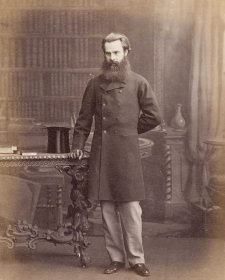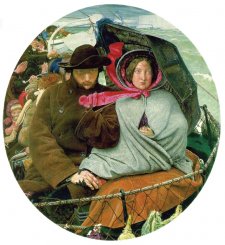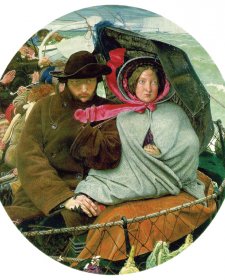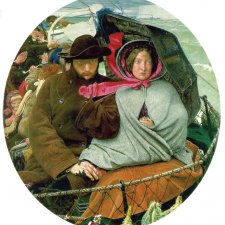Temporary road closures will be in place around the Gallery from 26 February during the Enlighten Festival.
Sculptor Thomas Woolner studied first with the brothers Henry and William Behnes and later at the Royal Academy. As a young man he was a founding member of the Pre-Raphaelite Brotherhood and contributed poems to its journal, The Germ. Having failed to attract any major commissions, Woolner came to Victoria in 1852 to try his luck on the goldfields. He had some success, but was so appalled by the conditions that he returned to Melbourne and began leveraging his social connections to secure portrait commissions. One of his first Melbourne sitters was lieutenant-governor Charles Joseph La Trobe – a cousin of Woolner’s friend and prospecting companion Edward La Trobe Bateman. In 1854, his Melbourne options exhausted, Woolner went to Sydney and made portraits there, including those of William Charles Wentworth and Phillip Parker King. He cast the medallions in plaster here and then took the plaster versions back to London to be cast in bronze for shipment back to the colony. In all, he produced some 30 portrait medallions during his stay in Australia but bemoaned being unable to paint portraits, by which means he ‘might have made plenty of money in no very great time.’ After returning to England Woolner continued his portrait practice, making sculptures of sitters such as Tennyson, Carlyle, Gladstone, Darwin and Dickens among numerous others. The National Portrait Gallery in London has 21 sculptures by Woolner as well as a drawing of him by fellow Pre-Raphaelite brother Dante Gabriel Rossetti – made shortly before Woolner sailed for Australia in 1852.
Purchased 2006



On one level The Companion talks about the most famous and frontline Australians, but on another it tells us about ourselves.



28 October 2015
Desperately seeking Woolner medallions



In 2006 the National Portrait Gallery acquired a splendid portrait of Victoria's first governor, Lieutenant Governor Charles Joseph La Trobe by Thomas Woolner.